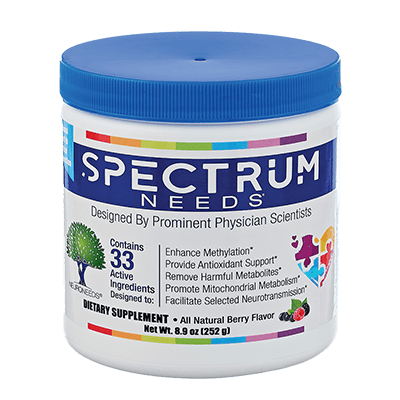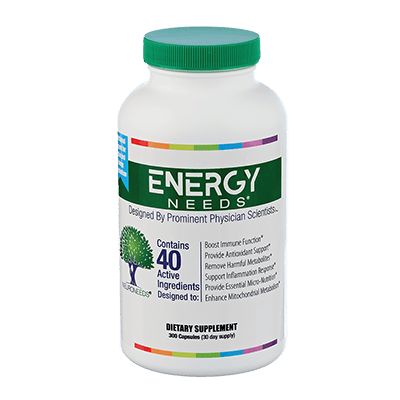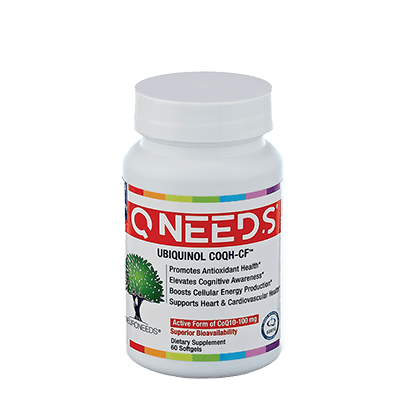By: Richard G. Boles, M.D.; NeurAbilities Healthcare, Voorhees, NJ, USA
Whole Genome Sequencing (WGS) was recently conducted on 18 patients with myalgic encephalomyelitis/chronic fatigue syndrome (ME/CFS) and the data identified variants to be known and/or highly suspected to cause disease (See Table 2 below).
An excellent place to learn more about myalgic encephalomyelitis/chronic fatigue syndrome (ME/CFS) can be found here.
https://www.neuroneeds.com/fatigue_landing-page/
ABSTRACT: Chronic fatigue is often of unknown cause and is a major factor in suffering and disability. To determine the ability of whole genome sequencing (WGS) to identify sequence variants that are likely disease associated among patients with idiopathic chronic fatigue, a retrospective chart review was conducted by the author in 18 of his patients whereas chronic fatigue was one of the presenting chief complaints. At least 16 of these patients met clinical diagnosis of myalgic encephalomyelitis/chronic fatigue syndrome (ME/CFS). Each of these patients also suffered from a wide variety of additional chronic issues (e.g., pain, nausea). A DNA sequence variant highly likely to be disease related was identified in 16/18 (89%). The genes identified clustered in two main pathways, ion transport (especially cation channels) and energy metabolism/mitochondria; a variant of interest in at least one of these pathways was identified in 15/18 (83%). DNA testing led to new treatment options in 15/18 (83%) of the patients, including dietary supplements in 14, and prescription medications in 13, generally focusing on cation channels and/or mitochondrial function. Whereas data is available, 7/7 patients in which a treatment was attempted based on DNA results showed some degree of (anecdotal) clinical improvement, with 4/7 (57%) showing substantial improvement. In conclusion, WGS in chronic fatigue can be highly effective in terms of improving diagnosis and treatment options, and likely as well for clinical outcomes.
BRIEF REPORT
INTRODUCTION: Fatigue is a very common complaint and serves a protective function in promoting rest to assist healing. Thus, fatigue is a natural part of a wide variety of medical conditions. Chronic illness generally leads to chronic fatigue, regardless of the cause of the illness. However, chronic fatigue is often of unknown cause (idiopathic), and this is a major factor in terms of both suffering and disability in the population. A relatively-common and severe form of chronic fatigue associated with post-exertional fatigue is known as myalgic encephalomyelitis/chronic fatigue syndrome (ME/CFS). The cause is presently unclear, but the condition is associated with mitochondrial dysfunction and immune dysfunction.
OBJECTIVE: To determine the ability of whole genome sequencing (WGS) to identify sequence variations that are likely disease associated among patients with idiopathic chronic fatigue in clinical practice.
METHODS: The NeurAbilities NeuroGenomics Service was designed to use modern genetics sequencing to improve diagnosis and treatment in patients with a variety of neurological and functional disorders. WGS, which is the sequencing of essentially all of the 3.1-billion base pairs in our DNA, is the main diagnostic tool employed by the Service, with sequencing conducted by Variantyx (Framingham, MA). A retrospective chart review was conducted in May 2022 of all Program patients that had undergone WGS to identify those in which chronic fatigue was one of the presenting chief complaints of the patient/family. An in-depth review of the raw genetic data was performed by the author using proprietary software developed by Variantyx.
RESULTS: A total of 62 unrelated patients with WGS at Variantyx had been evaluated clinically by the author. Among these, 18 had fatigue listed as the main concern of the patient or family (chief complaint) or one among the top 3 complaints, and were thus included in the study. Sixteen of these 18 patients meet Centers of Disease Control (CDC) diagnostic criteria for ME/CFS , with the remaining two patients likely having this condition but inadequate data was available on chart review to satisfy all criteria. Age ranged from 5 to 38 years, with most being teens (5 patients) or in their 20s (9 patients). Eleven of the 18 were female. All of the patients had additional clinical issues beyond fatigue, and most of them had multiple additional issues (Table 1).
Table 1: Patient Clinical Parameters Beyond Fatigue
• GI: 18/18 (present in 18 out of the 18 patients) (including 14 with nausea/vomiting, and 12 with bowel dysmotility/irritable bowel)
• Dysautonomia: 17/18 (14 POTS/dizziness)
• Pain: 16/18 (14 headache, mostly migraine, 11 limb pain)
• Cognitive: 15/18 (9 AD/HD, 6 autism, mostly high-functioning)
• Sleep disorders: 14/18 (9 parasomnia, e.g., night terrors, sleepwalking)
• Psychiatric: 12/18 (10 anxiety, 7 depression)
• Neurological (other than the above categories): 12/18 (8 muscle weakness)
• Immunological: 11/18 (7 frequent infections, 4 mast cell activation)
• Urological: 7/18 (6 frequent urination)
Variants known or highly suspected to be disease causing were designated as Pathogenic and Likely Pathogenic (P/LP), respectively. Among the 18 patients, 12 had a P/LP variant, six of which were de novo (a new mutation absent in both parents), and another six of which were inherited from a parent (Table 2).
Table 2: Pathogenic and Likely Pathogenic Variants (P/LP) in the 18 Patients
De novo, 5 heterozygous (one copy of the variant), 1 heteroplasmic (mtDNA):
• POGZ: heterochromatin formation and mitotic progression, hyperactivation of excitatory synaptic transmission
• SLC6A15: neuron-specific neurotransmitter & neutral amino acid transporter, impact on glutamatergic neurotransmission
• CSNK2B (stop gain): dopamine signaling
• EIF4A2 (frameshift): transcription regulation of oxidative metabolism
• SP8: transcription factor in brain and skeletal morphogenesis
• MT-TA (heteroplasmic): mtDNA-encoded transfer RNA, mitochondrial protein synthesis
1.https://nap.nationalacademies.org/resource/19012/MECFS_ProposedDiagnosticCriteria.jpg
2.Per the American Academy of Medical Genetics and Genomics (ACMGG) and ClinVar
Inherited, 5 heterozygous, 1 hemizygous (X-linked, single copy in a male):
• CLCN1 (stop gain): chloride channel on skeletal muscle, causal for myotonia
• PHKA2 (hemizygous): alpha subunit of hepatic phosphorylase kinase, associated with glycogen storage disease type IXa
• ASMT (del 115 kb on Xp22.33, chromosomal deletion), which synthesizes melatonin
• TREX1 (frameshift): exonuclease activity to destroy damaged DNA
• MEFV: innate immune sensor that can trigger formation of an inflammasome
• COL4A1: collagen gene, associated with vascular Ehlers-Danlos syndrome
This Table provides the gene identification and the main known function(s) of the encoded protein. Information regarding some variants is provided in parentheses.
Half of the patients (7/18) have a “Clinical Diagnostic” variant. These were defined as a Variant of Uncertain Significance (VUS, per ACMGG/ClinVar2) whereas the variant is rare and highly conserved among vertebrates, and in which the patient meets clinical diagnostic criteria for a condition associated with variants in that gene (Table 3).
Table 3: Clinical Diagnostic Variants and Matching Phenotypes of the Patients
• CACNA1A: calcium channel; migraine with aura, hemiplegia
• CACNA1A: calcium channel; migraine with aura
• CACNA1S: calcium channel; periodic paralysis
• SCN9A: sodium channel; amplified pain syndrome
• SCN9A: sodium channel; widespread chronic pain
• CACNA1A, CACNA1S, and ATP1A2 (ion pump): hemiplegic migraine
• KCNJ18: potassium channel; periodic paralysis
This Table provides the gene identification and the main known function(s) of the encoded protein; as well as the clinical findings in each patient consistent with published manifestations of that gene.
While the genes listed in Tables 2 and 3 are involved in a variety of different pathways, the following predominated: ion transport (CACNA1A, CACNA1S, CLCN1, KCNJ18, SCN9A, ATP1A2), energy metabolism/mitochondria (EIF4A2, MT-TA, PHKA2), and neurotransmission (CSNK2B, POGZ, SLC6A15). All the ion transport genes except one (CLCN1) involve the movement of positively charged ions (cations).
An additional 14 Variants of Uncertain Significance (VUS)s were noted in nine patients that are consistent with the clinical manifestations found in the patient, yet no firm diagnosis could be made. All these genes are involved with cation transport (CACNA1A, KCNT1, RYR2, SCN9A), energy metabolism/mitochondria (KIF1B, MT-ATP6, MT-ND1, MT-RNR1, POLG, SLC52A2, TRAP1), or inflammation/immunity (IFNGR1, MEFV, NLRP3).
Seventeen of the 18 patients were given treatment recommendations based upon the results of the genetic sequencing (Table 4). The sole exception was a patient that had previously been diagnosed with a metabolic disease by biochemical means, in which the DNA analysis confirmed the existing diagnosis and appropriateness of the current treatment strategy. The exact treatment recommended in each case was variable as they were based upon the heterogenous genes involved, but generally fit into categories of treatments use for cation channelopathy (defective cation transport) and mitochondrial dysfunction.
In just over half of the patients (10), follow up was inadequate to determine the efficacy of recommendations from DNA testing. Adequate data was available in 8 patients, and 7 have seen clinical improvement temporally associated with therapy related to the DNA testing. The single exception is a patient in which no genetic findings were identified thought likely to be related to disease. Four of the 7 improved substantially.
Table 4: Changes to Management Based on DNA Findings in the 18 Patients
• Supplements 14, most common: mitochondrial, potassium, GABAergic
• Prescription medication 13, most common: high-dose potassium, acetazolamide
• Supplement or medication 15
• Specialist referral 5, highly variable
• Additional testing 2
• Any management change 17
CONCLUSIONS:
- Most of the 18 chronic fatigue patients had at least one variant identified on DNA sequencing that is highly likely to be disease related, including 12 patients with a P/LP variant (Table 2) and 7 patients with a Clinical Diagnostic variant (Table 3).
a. At least one of these variants was identified in 16 of the 18 patients (89%). - The genes tended to cluster in two main pathways, ion transport (especially cation channels) and energy metabolism/mitochondria.
a. In 8/18 (44%) patients, at least one ion channel variant highly likely to be disease related (P/LP or Clinical Diagnostic, Tables 2, 3) was identified. - Adding in the possibly diseased-related (VUS) variants, at least one variant of interest was identified in 17 of the 18 patients (94%).
a. An ion channel variant was identified in 11/18 (61%).
b. An energy metabolism/mitochondria variant was identified in 7/18 (39%).
i. Either an ion transport or energy metabolism/mitochondrial variant was identified in 15/18 (83%).
c. An inflammation/immunity variant was identified in 3/18 (17%) patients. - DNA testing generally led to new treatment options:
a. 15/18 (83%) of the patients had a new treatment that was started based upon the DNA results.
i. Over-the-counter dietary supplements and prescription medications were represented approximately equally among the patients.
ii. Treatments generally focused on cation channels and/or mitochondrial function.
b. Referrals to medical specialists (5/18, 28%) and additional testing (2/18, 11%) was recommended in a minority of cases.
c. While data is limited, 7/7 patients in which a treatment was attempted based on DNA results showed some degree of (anecdotal) clinical improvement, with 4/7 (57%) showing substantial improvement.
Author’s Comments: While my gestalt was that DNA testing was highly beneficial in my patients with chronic fatigue, the actual results surprised me with the extremely high proportions in which sequence variants leading to diagnoses were made, treatments were recommended, and anecdotal clinical improvement was relayed by the patient and family.
It is my strong opinion that whole genome sequencing (WGS) should be the standard-of-care in cases of idiopathic (unknown cause) and significant chronic fatigue (generally corresponding to ME/CFS). In addition to the human component of improved diagnosis (“No, it’s not all in your head”) and outcomes, I believe that cost effectiveness strongly suggests this approach. Sequencing costs have decreased markedly into the couple to few thousand US$ range per patient, and improved clinical outcomes translate to cost savings in terms of reduced additional diagnostic testing, decreased medical utilization, and lessened disability. In addition, the fear of WGS leading to substantial costs in terms of additional referrals and tests was not shown in the data or in my experience.
Therapeutic approaches should consider the important components of cation channels and mitochondrial dysfunction in the pathophysiology of ME/CFS.
Disclosure: Dr. Boles is the Chief Medical & Scientific Officer for NeuroNeeds LLC, the start-up company that makes SpectrumNeeds®, EnergyNeeds®, QNeeds®, and CalmNeeds®. As such, he may receive financial compensation based upon by efforts and/or the success of the company. You are under no obligation to purchase this or any products, whether recommended by Dr. Boles or another health care provider. As always, it is recommended that you contact your physician regarding these products and all other changes to disease management.
The Content within this article and NeuroNews Blog is not intended to be a substitute for professional medical advice, diagnosis, or treatment. Always seek the advice of your physician or other qualified health provider with any questions you may have regarding a medical condition. Never disregard professional medical advice or delay in seeking it because of something you have read on this Blog.








